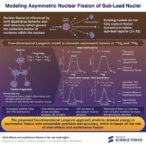
In a groundbreaking study published ahead of print in the Journal of Exposure Science & Environmental Epidemiology, researchers have unveiled comprehensive measurements of vinyl acetate monomer (VAM) concentrations across a broad spectrum of consumer products, coupled with sophisticated exposure modeling to estimate potential human health risks. Vinyl acetate monomer, a volatile organic compound widely used in the manufacture of adhesives, paints, and coatings, has long been under scrutiny due to its known irritant properties and suspected carcinogenic potential. This investigation not only quantifies VAM presence where it matters most—in products consumers interact with daily—but also pioneers novel computational models to predict real-world exposure scenarios, marking a significant leap forward in exposure science.
The intricate chemistry of vinyl acetate monomer makes it invaluable to numerous industrial processes, particularly in the synthesis of polymers and copolymers used to enhance the durability and texture of consumer goods. However, its volatility translates into an inherent potential for inhalation exposure and dermal contact, raising concerns among regulatory bodies. Yet, until now, the actual levels of VAM residing within end products and the consequent exposure doses consumers encounter remained poorly defined. This knowledge gap prompted the multidisciplinary research team to employ state-of-the-art analytical techniques, including gas chromatography-mass spectrometry with headspace sampling, to detect and quantify VAM in a diverse array of goods ranging from household adhesives to cosmetic formulations.
The study meticulously catalogued the concentrations of vinyl acetate monomer in over 100 product samples sourced from retail outlets, providing a robust data set that illustrates both the ubiquity and variability of VAM presence. The measured levels exhibited a wide distribution, with some adhesives and paints containing concentrations exceeding previously assumed thresholds, thereby implying a potential for meaningful inhalation exposure during application or prolonged use. Importantly, the study also highlighted certain product categories where VAM was detected at trace levels, suggesting formulation improvements or regulatory compliance, depending on the market.
.adsslot_3TKI6H5uxC{width:728px !important;height:90px !important;}
@media(max-width:1199px){ .adsslot_3TKI6H5uxC{width:468px !important;height:60px !important;}
}
@media(max-width:767px){ .adsslot_3TKI6H5uxC{width:320px !important;height:50px !important;}
}
ADVERTISEMENT
Transcending mere measurement, the investigators constructed refined exposure models integrating the empirically obtained concentration data with user behavior patterns, indoor air exchange rates, and product usage frequencies. By simulating realistic scenarios—such as a consumer applying glue in a poorly ventilated room or a painter working with freshly mixed coatings—the models yielded time-resolved exposure estimates that reflect acute and chronic inhalation risks. These simulations incorporate dynamic parameters including volatilization kinetics, room volume, and duration of exposure, embodying an advancement over static risk assessments frequently employed in occupational settings.
One pivotal revelation from these models is the identification of critical exposure windows, during which VAM concentrations in indoor air may peak, potentially eliciting immediate respiratory irritation or triggering sensitization. The data indicate that short-term intense exposure episodes, particularly in confined spaces without adequate ventilation, pose the greatest threat. This underscores the urgent need for consumer education on proper product use and underscores the importance of robust ventilation strategies during and after application of VAM-containing products.
In addition to inhalation, dermal exposure pathways were considered, given the adhesive nature of many VAM-containing consumer products. While skin absorption rates of vinyl acetate monomer are relatively low, the cumulative impact over extended periods, especially for professional users or hobbyists engaging in repetitive application, cannot be discounted. The study calls for further toxicokinetic studies to elucidate dermal uptake and systemic distribution following chronic low-dose exposures, highlighting an area ripe for future research.
From a regulatory perspective, the findings bear significant implications. Current safety guidelines and permissible exposure limits derive largely from occupational studies with direct inhalation of industrial-grade monomer vapors. However, consumer exposure scenarios—characterized by intermittent, low-level exposures in variable environmental contexts—have generally been neglected. This research advocates for the revision of risk assessment frameworks to incorporate exposure modeling that mirrors consumer realities, thereby enhancing protection protocols and informing product labeling requirements.
Furthermore, the study sheds light on potential strategies to mitigate exposure, suggesting reformulation of consumer products to reduce free vinyl acetate monomer content or substituting alternative monomers with safer toxicological profiles. Such proactive innovation could reconcile industrial utility with consumer health imperatives, positioning manufacturers at the forefront of safe product design.
The research team also emphasizes the interdisciplinary approach underpinning their work, blending analytical chemistry, environmental science, toxicology, and modeling expertise to create a comprehensive exposure profile. This paradigm illustrates how complex chemical exposure issues demand holistic investigation methods that transcend traditional siloed research, fostering a new standard for evaluating chemical safety in consumer contexts.
Public health stakeholders are likely to find these insights particularly salient, given the widespread use of VAM-containing products across diverse demographic groups, including children and sensitive populations. A nuanced understanding of exposure patterns facilitates targeted risk communication and could drive policy initiatives aimed at reducing public health burdens related to chemical irritants and potential carcinogens.
The technical rigor employed in quantifying VAM concentration—leveraging advances in sensor sensitivity and sampling methodologies—provides a template for similar investigations into other volatile monomers and organic chemicals pervasive in the consumer marketplace. By establishing a methodological benchmark, this study encourages greater transparency and data availability, which are essential for informed decision-making and regulatory oversight.
Another dimension of the research considers indoor air quality, a growing public concern as modern living spaces become more airtight, potentially exacerbating the accumulation of volatile organic compounds like vinyl acetate monomer. The findings advocate for integrating chemical exposure considerations into building design and ventilation standards to minimize health risks emanating from everyday product use.
Critically, the study also tackles the uncertainties and limitations inherent in exposure modeling, openly discussing assumptions and data gaps. This scientific candor bolsters the credibility of the work and calls upon the research community to collaboratively refine models, incorporating real-world exposure biomarkers and epidemiological data to link exposure metrics with health outcomes more definitively.
In sum, this pioneering research delivers an unprecedented examination of vinyl acetate monomer concentrations within consumer products and elucidates the complexities of human exposure through sophisticated modeling techniques. It bridges the chasm between chemical production and public health, empowering regulators, manufacturers, and consumers with actionable knowledge. As chemical safety continues to ascend global priorities, studies like this exemplify the critical role of interdisciplinary research in fostering safer consumer environments.
Subject of Research:
Measurement of vinyl acetate monomer concentrations in consumer products and modeling of consumer exposure.
Article Title:
Measurement of vinyl acetate monomer in consumer products and modeled estimates of consumer exposure.
Article References:
Gauthier, A., Behymer, W., Bare, J. et al. Measurement of vinyl acetate monomer in consumer products and modeled estimates of consumer exposure. J Expo Sci Environ Epidemiol (2025). https://doi.org/10.1038/s41370-025-00786-y
Image Credits: AI Generated
DOI: https://doi.org/10.1038/s41370-025-00786-y
Tags: analytical techniques in environmental healthconsumer product chemical analysisconsumer product safetydermal contact safetyexposure modeling techniquesexposure science advancementshealth risk assessment of consumer goodsindustrial use of vinyl acetateinhalation exposure risksvinyl acetate exposure measurementvinyl acetate monomer carcinogenic potentialvolatile organic compounds health risks



